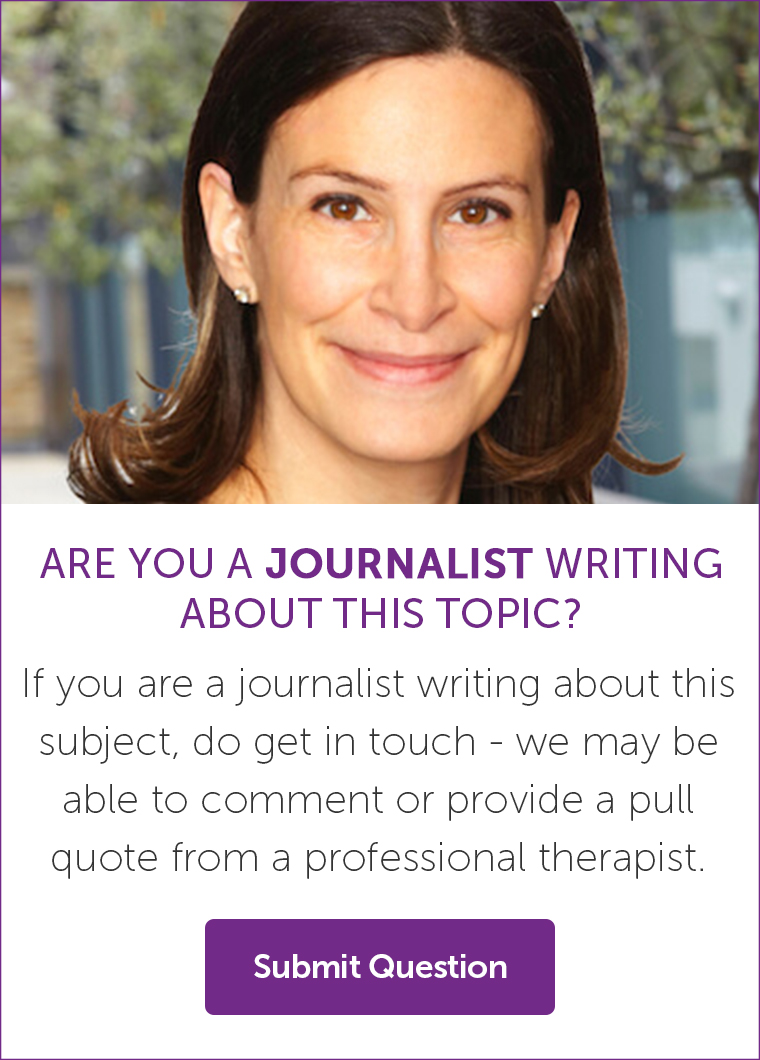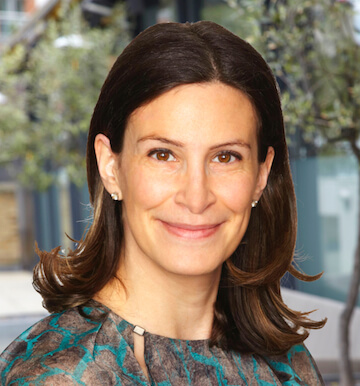Obsessive Compulsive Disorder (OCD): A Help Guide
This guide provides information for those who are suffering from OCD, and for those who are concerned about a loved one who might be affected.
What is OCD?
OCD is understood as an anxiety disorder. While anxiety can be a survival instinct and a useful tool, many individuals suffer with anxiety problems. OCD is recognised by obsessive thoughts and compulsive behaviour.
Obsessive thoughts, urges or images can often be unwanted and yet feel uncontrollable. This can lead to feelings of anxiety.
Compulsive behaviours involve alleviating the anxiety caused by the obsession by behaving in a certain way.
An example is that an individual may have an obsession with wanting to wash their hands and becoming anxious that it must be done. The compulsion is doing so in order to alleviate anxiety. For this behaviour to constitute as part of OCD, it must be disruptive to everyday functioning such as ensuring that hands are washed after touching anything, washing for very long periods of time so that irritation to skin is caused, washing so much that appointments are missed, and an inability to control the obsession mentally.
What are the signs and symptoms of OCD?
The severity of OCD has great scope. It can be slight and not interfere too much. However, it can also be extremely severe and can take over everyday life. Sufferers may try to resist or ignore an obsession but will experience a high level of anxiety and distress until the obsession is acted upon.
Some examples of obsessions are:
- superstitious thoughts
- imagining doing harm
- fearing contamination
- excessive doubts
- ‘forbidden’ thoughts
- a fear of failing to prevent harm
Some examples of compulsions are:
- ordering items
- arranging items
- focusing on the number of times to conduct behaviours
- repeating actions
- washing
- checking
- touching
- praying
- accumulating
- throwing things away
How common is OCD?
Estimates indicate that between 1-3% of the population have OCD.
OCD can affect people of both genders, all ages, ethnicities, and backgrounds.
The common onset of OCD is early adulthood before the age of 25 years. It is less common for OCD symptoms to begin emerging after this age.
What are the causes of OCD?
There are many known causes of OCD. There are a range of models that can be used to understand the development, and in many cases there are a number of contributing factors.
Many negative life experiences which may contribute to the development include physical, sexual and emotional abuse, physical illness, the loss of a loved one, war experience, other traumas and overprotection. If such experiences are left emotionally unresolved, this can often take the form of mental ill health including anxiety problems. During such traumatic experiences, an individual may feel a sense of having limited/ no control. OCD may be a complex result of an individual trying to regain some control back over one’s life, body and environment.
Further correlations have been found with depression, other anxiety disorders, substance misuse, body dysmorphic disorder and eating disorders. This gives further support to the idea that OCD can often be intertwined with underlying issues and past experiences. OCD can often be a coping mechanism used to deal with ‘inner pain’.
Further environmental factors may enhance an existing anxiety problem such as poor social support and stress.
Many individuals may not be able to identify a specific cause. Some research suggests that these individuals may have suppressed certain memories into their subconscious mind, therefore not consciously knowing why their anxiety disorder has developed.
Biological and genetic evidence is limited for explaining the development of OCD. There have been suggestions made, yet the consensus remains that environmental factors are generally the main causes of OCD.
Misunderstandings and stigma about OCD
Most individuals will have experienced slighter variations of the symptoms of OCD. For example, some may have unwanted thoughts and most have some sense of order and organisation. However for many, this does not become obsessive or compulsive.
Despite there being this link between sufferers and non-sufferers, there are many misunderstandings among the general public. Many people may find many compulsions to be unnecessary such as checking a door is locked 5 times. However it is important to understand that without checking the door is locked 5 times, the individual will feel extremely anxious.
Criticisms, negative comments and impatience are generally not helpful to the sufferer. Try to remember that they have OCD for a reason and that it is a mental health problem. An individual does not choose to develop OCD and they often cannot imagine life without their anxiety disorder.
It is also important not to completely normalise the compulsions by helping the sufferer out with rituals or routines. Others can help the person to recover by encouraging sufferers to seek treatment.
People with OCD may feel ashamed and embarrassed of their condition and may find it difficult to discuss with others.
What are the diagnostic criteria for OCD?
The UK diagnostic system (ICD-10) suggests for a diagnosis, ‘obsessive symptoms and/ or compulsive acts must be present on most days for at least 2 successive weeks and be a source of distress or interference with activities. The obsessive symptoms should have the following characteristics:
- They must be recognized as the individual's own thoughts or impulses
- There must be at least one thought or act that is still resisted unsuccessfully, even though others may be present which the sufferer no longer resists
- The thought of carrying out the act must not in itself be pleasurable (simple relief of tension or anxiety is not regarded as pleasure in this sense)
- The thoughts, images, or impulses must be unpleasantly repetitive.’
The latest USA diagnostic system (DSM-IV-TR) explains that OCD can be diagnosed by taking the following into consideration:
At some point during the course of the disorder, the person has recognized that the obsessions or compulsions are excessive or unreasonable. (This does not apply to children).
The obsessions or compulsions cause marked distress, are time consuming (take more than 1 hour a day), or significantly interfere with the person’s normal routine, occupational functioning, or usual social activities or relationships.
If another Axis I disorder is present, the content of the obsessions or compulsions is not restricted to it (e.g. preoccupation with food in the presence of an Eating Disorder)
The disturbance is not due to the direct physiological effects of a substance (e.g., a drug of abuse, a medication) or a general medical condition.
In regards to the newest edition, the DSM-V, some speculations have been made about whether any changes should be made to guidelines to OCD. Some have suggested that OCD should not be categorised as an anxiety disorder whilst others have suggested it be renamed as a spectrum disorder.
There has also been attention raised on whether behaviour such as nail biting, scab picking (Dermatillomania) or hair pulling (Trichotillomania) should be classified as OCD.
What is the risk if left untreated?
One risk if OCD is left untreated is the worsening of symptoms and the development of other mental health problems. OCD can lead to significant impairment in occupation, interpersonal relationships and everyday functioning. OCD can become more severe over time without treatment, with more rituals and routines creeping into everyday life. Individuals suffering with symptoms should seek help and should not delay treatment.
What is the prognosis if treated?
There can be high success rates in treatment for OCD. Research, experiments, and clinical practice have led to the development of many evidence based treatments. These can result in an alleviation of illness and improvement in mental health.
Well-known individuals with OCD
Some famous people who have been associated with OCD include:
- Howard Hughes (see the film Aviator which is based on him)
- Jesscia Alba
- Cameron Diaz
Recommended intervention for OCD
Much research suggests that the best approach to treatment is almost always psychology based. Some anti-anxiety medication can ease symptoms, however some suggest they often do not alleviate the problem, therefore are not an effective treatment exclusively.
Because OCD can often have an impact on families and carers, interventions may be more effective when collaborated with families/ carers.
Evidenced-based treatment for OCD
There are many evidence based treatments available.
NICE recommends the use of Cognitive behavioural therapy (CBT) with exposure response therapy (ERP) as treatment for OCD.
CBT explores your thoughts, feelings and behaviour around obsessions and compulsions. Practical ways of effectively dealing with the anxiety disorder are developed.
ERP involves exposure to the obsession and then being asked to gradually refrain from the compulsion behaviour that usually follows. In time, the individual will learn that they can control their anxiety without the need to carry out the compulsion. Although this can seem daunting, a therapist works with a client at their own pace.
Other psychological approaches can involve Mindfulness and learning relaxation techniques. This can help with personal awareness and the development of calming coping styles.
Many sufferers find that OCD can causes problems within their families, therefore family therapy can be beneficial. An issue that can positively affect recovery is that those around the individual understand the anxiety disorder and that they can become involved in recovery.
Pharmacological approaches can also be used to alleviate symptoms such as anti-anxiety tablets.
Many people may benefit from one or a combination of such approaches.
Advice for breaking the cycle & resources
There are some self-control methods to try. Test yourself so that when you experience obsessions or urges, shift your behaviour to be something other than the desired compulsion. Examples include:
- Exercise
- Read
- Play a game
- Make a phone call
- Knit
- Paint
- Play a musical instrument
- Bake
Carry out the distractive behaviour for as long as possible. Practising self- control for delaying or avoiding the compulsion is an excellent step to take.
When you feel ready there are many ways in which you can seek help, support and advice. Firstly it may be worthwhile reading a self-help book. There are many out there:
- The OCD Workbook: Your Guide to Breaking Free from Obsessive-Compulsive Disorder Bruce Hyman and Cherlene Pedrick (2010).
- Helen Kennerley, Overcoming Anxiety - A Self-Help Guide (1997).
- Emma FletcherandMartha Langley. Free Yourself from Anxiety: A self-help guide to overcoming anxiety disorders (2008).
Some self-help websites include:
http://www.helpguide.org/mental/obsessive_compulsive_disorder_ocd.htm
http://www.mind.org.uk/mental_health_a-z/7988_understanding_obsessive-compulsive_disorder_ocd
Some useful telephone numbers include:
- NHS Direct- 0845 4647
- No Panic (Help line for anxiety sufferers)- 0800 138 98889
There are now many counselling and therapeutic services and organisations available. There are many trained professionals who will be able to support you such as Counsellors, Psychotherapists, Psychologists and Psychiatrists. Here are details of available services:
The NHS- seeing your GP and asking for a referral to see a specialist.
Charities- (such as MIND, Rethink, Young Minds and the Mental health foundation) some may provide support groups, therapy and advice in your local or near-by area. See their websites for further details.
Counselling and psychotherapy clinics and services- Search through online directories or contact your council for organisations that offer can therapeutic help. (Harley Therapy is one such clinic)
When seeing a healthcare professional you may be involved in an initial assessment. This will include being asked some questions to identify the issues, causes and problems. Try to be honest and open in your answers. The person asking the questions just wants to understand and help.




ASK US A QUESTION

ARE YOU A JOURNALIST WRITING ABOUT THIS TOPIC?
If you are a journalist writing about this subject, do get in touch - we may be able to comment or provide a pull quote from a professional therapist.
References
- Chartier-Otis, Perreault, Belanger (2010) Determinants of barriers to treatment for anxiety disorders. Psychiat Q, 81 (2) pp. 127–138.
- David Mataix-Cols, Ph.D.; Maria Conceição do Rosario-Campos, M.D.; James F. Leckman, M.D. (2005) A Multidimensional Model of Obsessive-Compulsive Disorder. Am J Psychiatry. 162:228-238.
- Diagnostic and statistical manual of mental disorders (DSMIV). (2004) Washington, DC: American Psychiatric Association.
- Hofmann, Sawyer, Witt, Oh (2010) The effect of mindfulness-based therapy on anxiety and depression: A meta-analytic review. J Consult Clin Psychol, 78 (2) pp. 169–183.
- Leckman JF, Mayes LC, Feldman R, Evans D, King RA, Cohen DJ: (1999) Early parental preoccupations and behaviors and their possible relationship to the symptoms of obsessive-compulsive disorder. Acta Psychiatr Scand . 100:1–26
- Mataix-Cols D, Rauch SL, Baer L, Eisen JL, Shera DM, Goodman WK, Rasmussen SA, Jenike MA (2002) Symptom stability in adult obsessive-compulsive disorder: data from a naturalistic two-year follow-up study. Am J Psychiatry; 159:263–268.
- Mineka S, Zinbarg R. A (2006) Contemporary learning theory perspective on the etiology of anxiety disorders: it’s not what you thought it was. Am Psychol. 61:10–26.
- Rosario-Campos MC, Leckman JF, Mercadante MT, Shavitt RG, Prado HS, Sada P, Zamignani D, Miguel EC (2001) Adults with early-onset obsessive-compulsive disorder. Am J Psychiatry; 158:1899–1903.
- Wittchen HU, Beesdo K, Gloster AT. (2009) The position of anxiety disorders in structural models of mental disorders. Psychiatry. Clin North Am. 32:465–481.
- World Health Organisation. (1992). ICD-10 Classifications of Mental and Behavioural Disorder: Clinical Descriptions and Diagnostic Guidelines. Geneva. World Health Organisation.
- Should OCD be classified as an anxiety disorder In DSM-V? Stein, et al., (2010) Depression and Anxiety. 27; 495-506.



